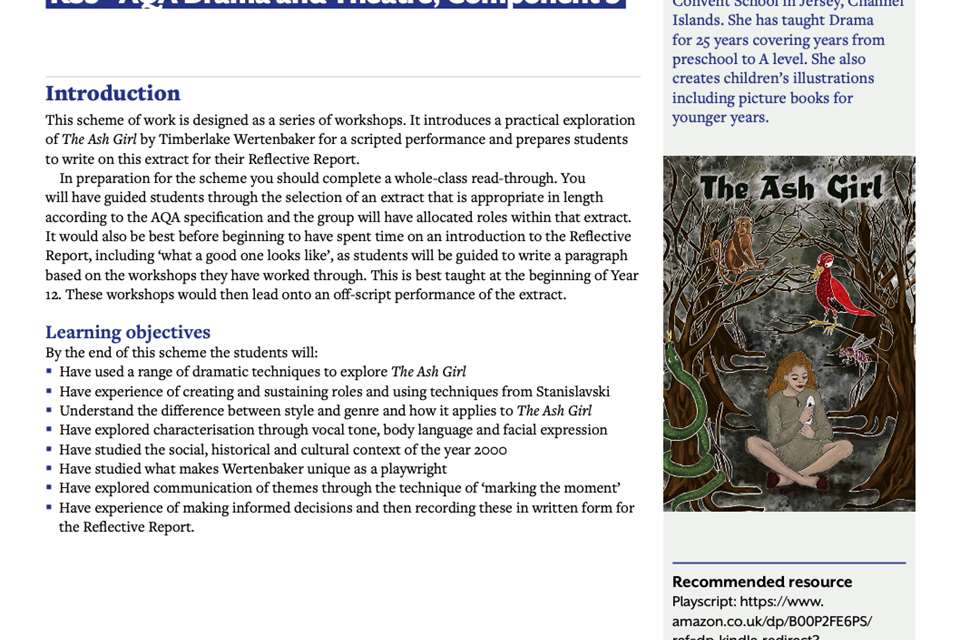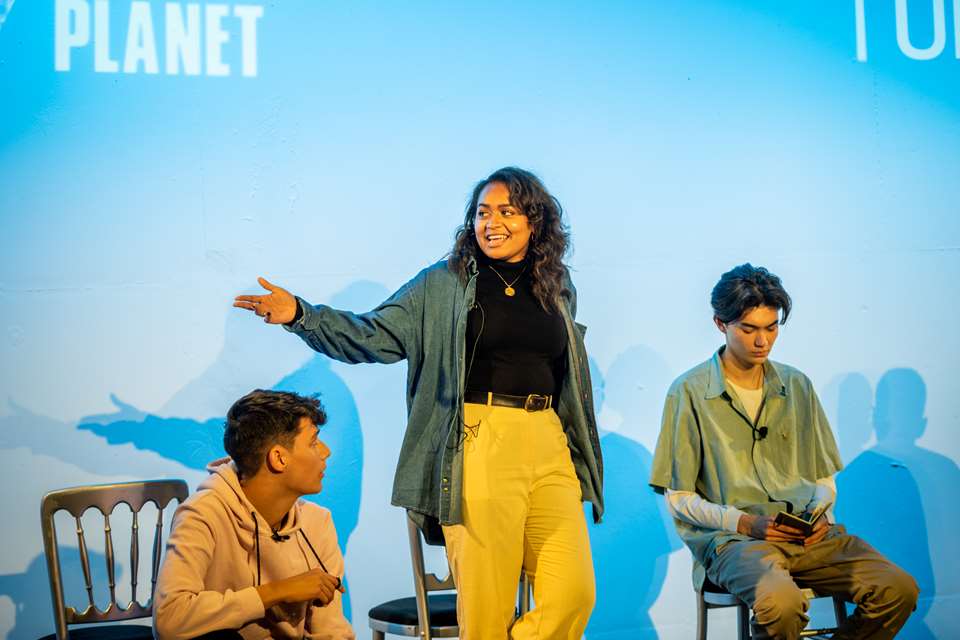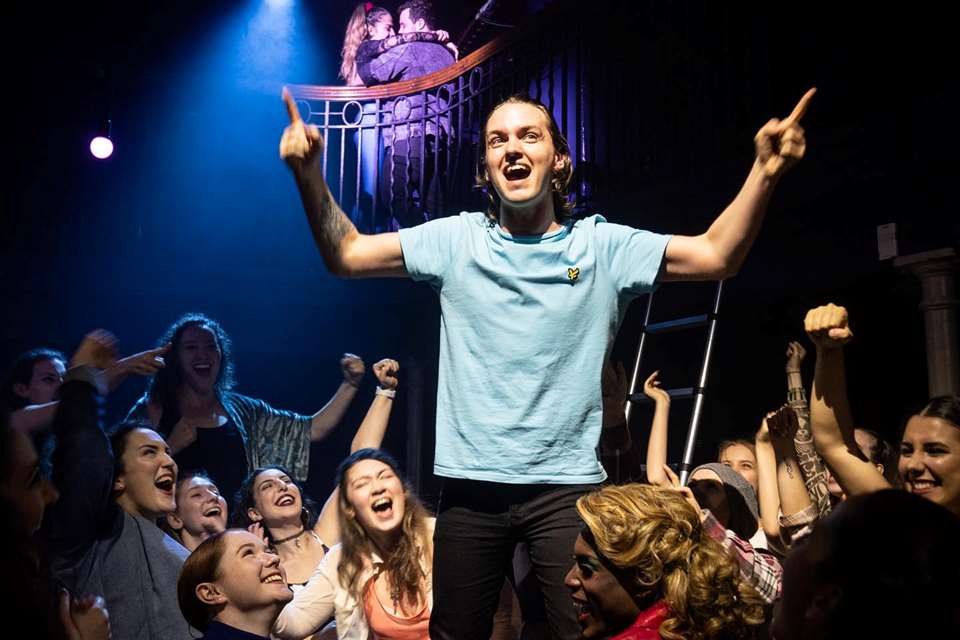Creating a monster: Blackeyed Theatre's Frankenstein
Sarah Lambie
Tuesday, February 1, 2022
In a remounting of their 2016 production, Blackeyed Theatre are about to embark on a 14-week tour of Frankenstein. Sarah Lambie meets the director to learn more
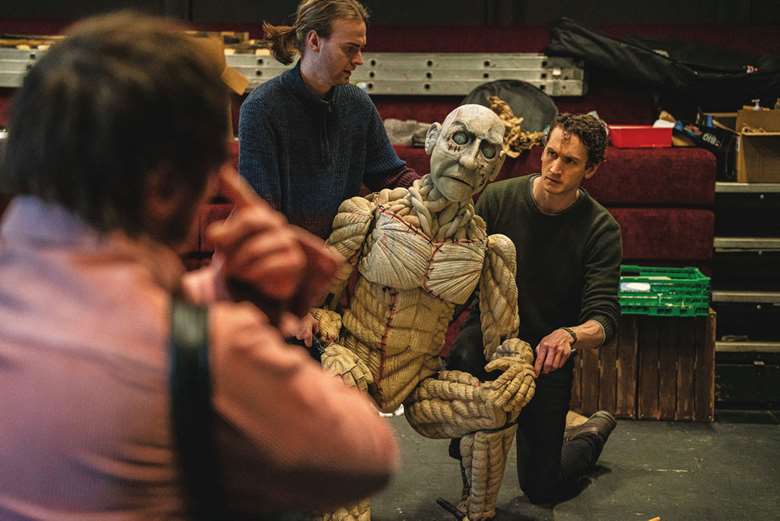
All images: Alex Harvey-Brown
Like many theatre producers in these uncertain times, Blackeyed Theatre are setting out to delight audiences this spring while shoring themselves up with a sure-fire hit, by mounting a revival of their very successful 2016 production of Frankenstein. It's a wise choice. The novel is a set text for many English students, and the production is full of elements which are eminently analysable for Drama students too – so apart from the expected crowd of adult audiences keen to see a classic story told by a highly reputable theatre company, they can hope to draw in a good number of school groups, too.
I spoke to the production's director, Eliot Giuralarocca, at the end of a full-on first week of rehearsals: ‘Because we did the show before, 6 years ago,’ he began, ‘and it was really successful and a lovely memory and a great experience, I'd sort of forgotten what a big show it was and how much we had to do!’
Bunraku puppetry
One of the most time-consuming elements of the production from a rehearsal perspective is the puppetry. In this show, the creature is portrayed using a bunraku puppet (in a similar style to those familiar from long-running productions such as War Horse and The Lion King), and in this respect, Giuralarocca is grateful for the head-start of having mounted the production before: ‘That was a voyage of discovery for me the first time round,’ he says, ‘because I had given the same rehearsal time to the scenes with the puppet as any other scene, thinking that the puppet was an actor, but of course it's not, it's a very intricate piece of choreography that needs drilling and discovering all at once. But we've got some great puppeteers in the show and now we know exactly how to block the puppet for it to come alive for the audience – so it's much quicker this time round.’
‘I was fairly new to puppetry when I first did this show,’ Giuralarocca tells me, ‘and the thing that I found extraordinary, and which I think grips school kids especially as well, is that when the puppet comes to life you look at the puppeteers, but when it's done well, after about ten seconds you stop looking at the puppeteers and you just see the puppet. That's a magical thing that you can only get in theatre. You can create amazing special effects in film, but you can't get that excitement of engaging an audience's imagination, because those effects do a lot of the work for you.’
The puppetry adds a layer of complication to the process of touring to such a wide variety of theatres, of all shapes and sizes. Over the course of the 14-week tour, the company are playing everything from big proscenium arch theatres to the tiny Theatre in Chipping Norton, and the Stephen Joseph Theatre in Scarborough, where the magic of the creature has to be brought to life in the round. This is trickier since as a rule you would try to choreograph puppetry in such a way that the audience doesn't see the back of the puppet or focus on the puppeteers, who may be, from some angles, obscuring their view of it. ‘We'll just have to keep him slightly more mobile,’ says Giuralarocca.
Dramaturgy
While this is a revival of a production which toured in 2016, audiences who saw it the first time around will detect some changes in the new version. The script has undergone a dramaturgical overhaul, with Blackeyed Theatre stalwart Nick Lane having re-adapted from John Ginman's original adaptation. In particular, Giuralarocca remarks upon the impact this has had on the presentation of the woman in Shelley's story. ‘Elizabeth is slightly brought up to date in terms of sensibility and strength, and making her a little bit more independent of thought,’ he tells me, remarking that Lane ‘very much has that sensibility, certainly with female characters, of saying “we have to be true to the integrity of the period and the source material, but at the same we're in 2021 and it's important that those female characters – who can sometimes be just appendages of men in the story – have their own voice and agency.” And especially in this, because it was written by a woman, and she was 17 when she wrote it – which is incredible to think of!’
The focus of the production is the moral quandary and emotional heart of the story: ‘if you bring something into the world, what's your moral responsibility, and if you turn your back on your child, what happens?’ asks Giuralarocca, ‘It's about someone who's playing God but without thinking through what happens next.’
One key element of the way the production is structured is, in Giuralarocca's words, ‘that you have a story within a story within a story. You start with Walton's story on the ship, and then Frankenstein clambers aboard and you get Frankenstein's story, and then within that story we get the creature telling his story from his point of view, so it's like a Russian doll.’
As such, the production uses ‘a lot of storytelling conventions – ensemble storytelling, direct address to the audience, characters going in and out of different realities. Frankenstein is talking to Walton, telling him the story, and he gets dragged back into the memories of what's happened. We re-enact the scenes of his memory, and then he gets dragged back out of that again, so there's a constant to and from of different realities.’
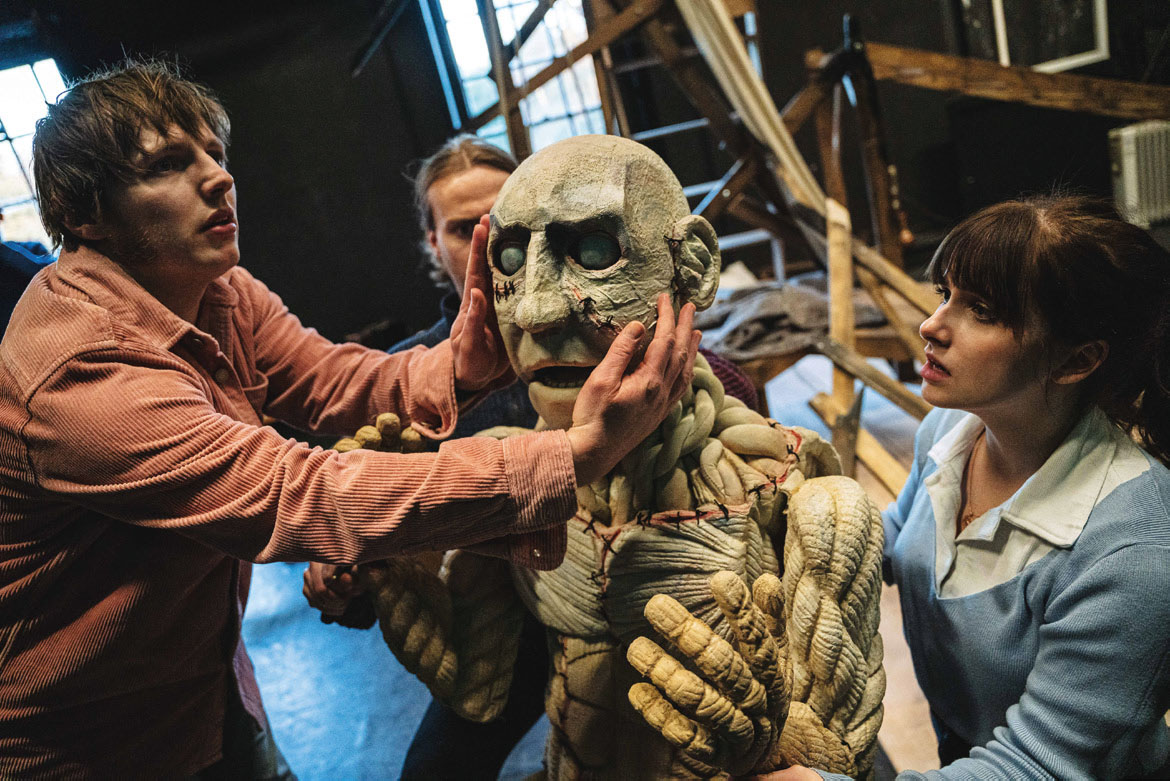 © ALEX HARVEY-BROWN
© ALEX HARVEY-BROWN
Rehearsals for Frankenstein
Design and performance integrated
As with all Blackeyed Theatre productions, there is plenty here to inspire young people who are devising drama or who are contemplating interesting and engaging ways to stage existing texts.
One lovely thing about this production is the way in which it builds on some of the fundamental elements of childhood play and make-believe, and on some ubiquitous drama workshop activities, to create a slick professional production. This is a great source of inspiration for young people, who should be able to see how much can be done using imagination and simple resources.
‘We use props in an interesting way: everything is created from the set,’ Giuralarocca tells me, ‘The conceit is that because it starts on the ship, everything that we use to tell the story comes from the ship. Sack, and ropes, and so on. We have a big sail that reveals the monster, and the ropes of the ship get put onto crates and stretched out so you have a kind of spiders web which becomes the laboratory.’
At the same time, that classic Drama exercise of soundscaping is used to great effect: ‘We've got timps and waterphones and drums and bells and cymbals and glocks and singing bowls and all sorts of weird and wonderful instruments and hitting bits of the set to create sounds. The conceit is that we're a group of actors telling you the story, and you're watching how inventively we tell it, as well as, hopefully, getting lost in the story itself.’
This last element is particularly appealing, I think, because so often it is difficult for students to see the connection between that drama game that they play, or exercise that they do in class, and the final results in a professional production. Here it is easy to see the product of that evolution, and there is plenty of analysis and discussion to be had having watched it as a group. This is certainly one of Giuralarocca's aims: ‘I would hope the show's a really good talking point for students,’ he finishes.
Online resources
Teachers booking for school groups of 25 or more will be given online access to the professionally filmed version of the play, included in the cost of their booking. This will facilitate further work with the production after the students have seen it live; as will the teacher pack, which is available for schools to download free here.
For full details of the tour and access to resources via the Blackeyed Theatre Schools’ Hub, go to blackeyedtheatre.co.uk/shows-2/online-for-schools/
Inspired by the production, Blackeyed Theatre are also collaborating with Bracknell-based companies The Alt Prov Group and The Practical Approach to deliver a creative programme for vulnerable and socially-excluded young people in Bracknell Forest.



